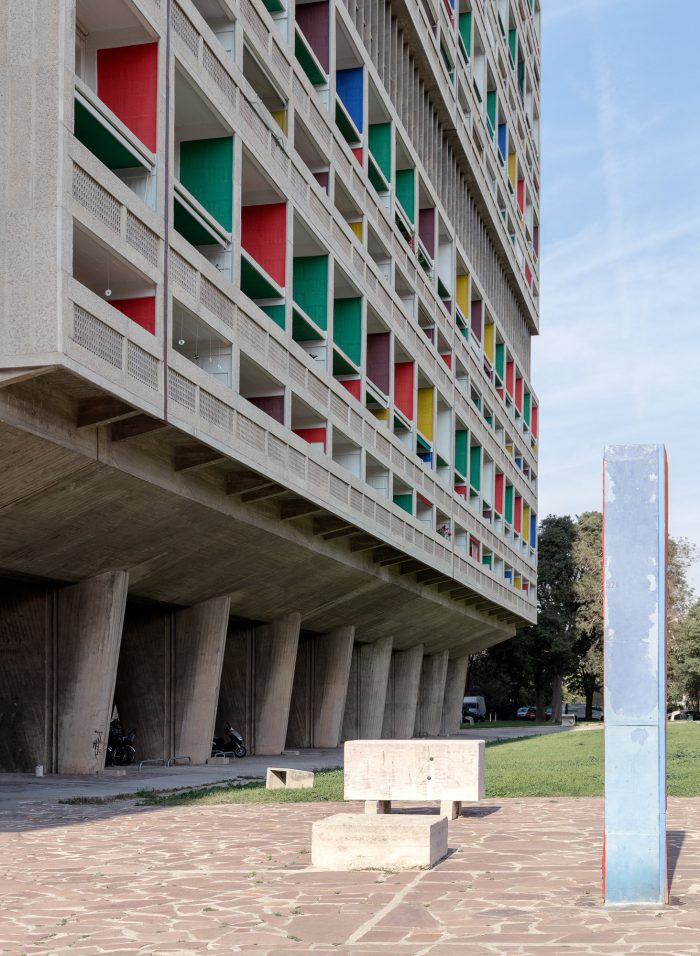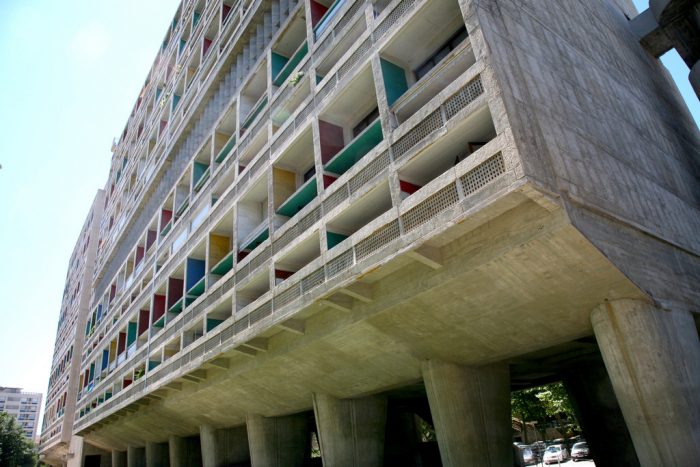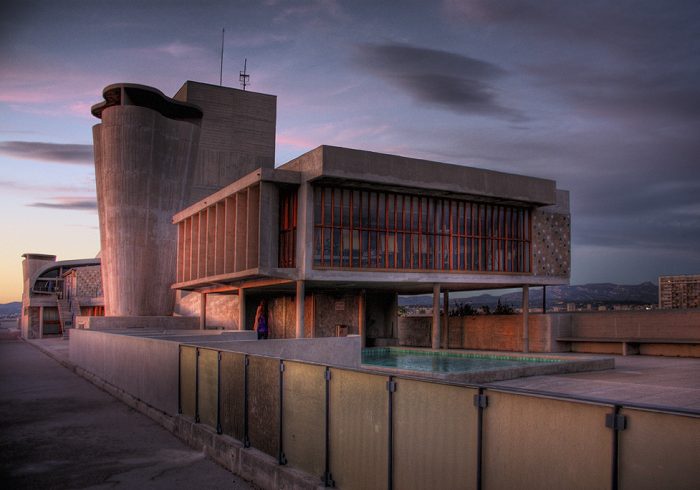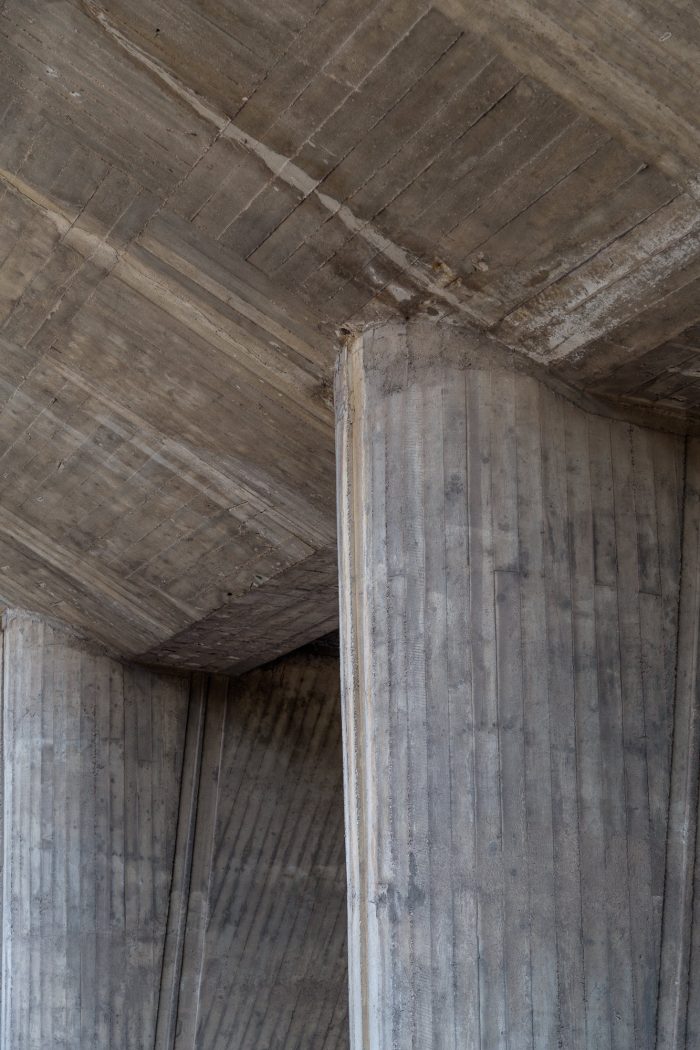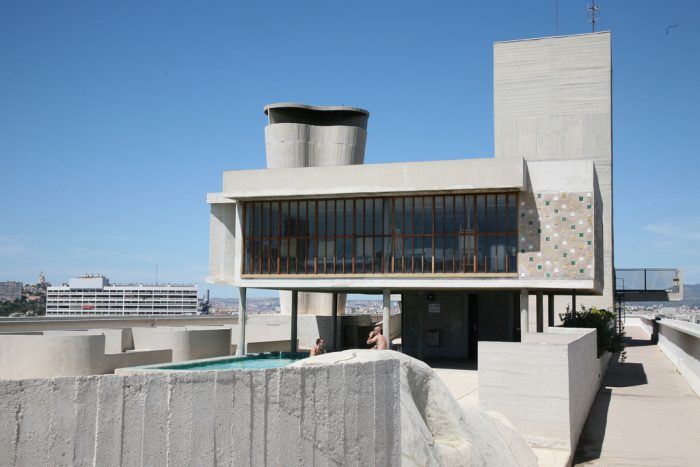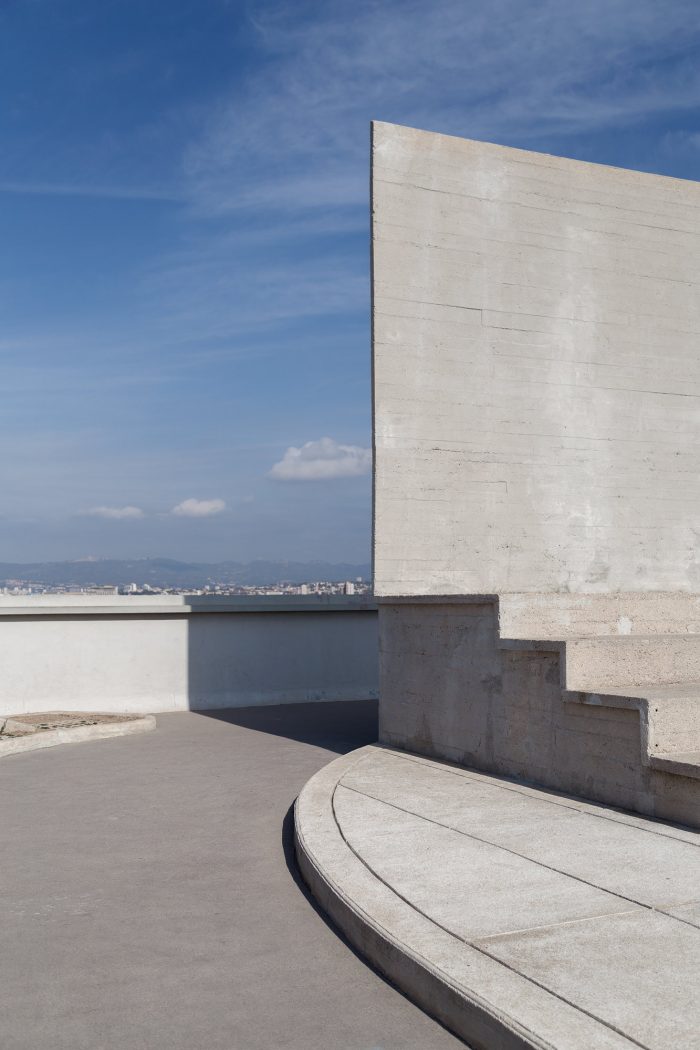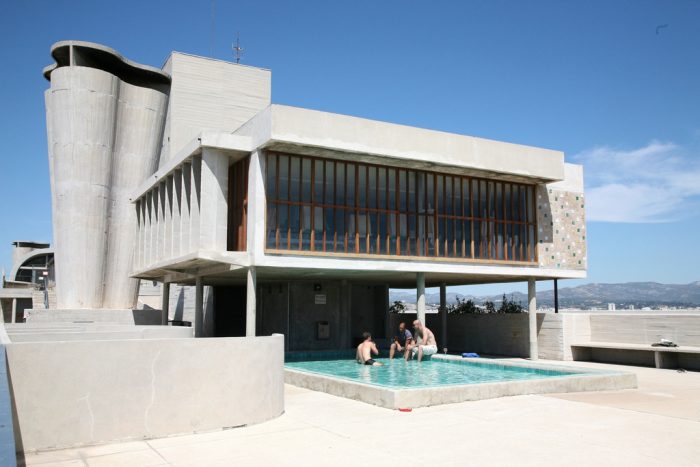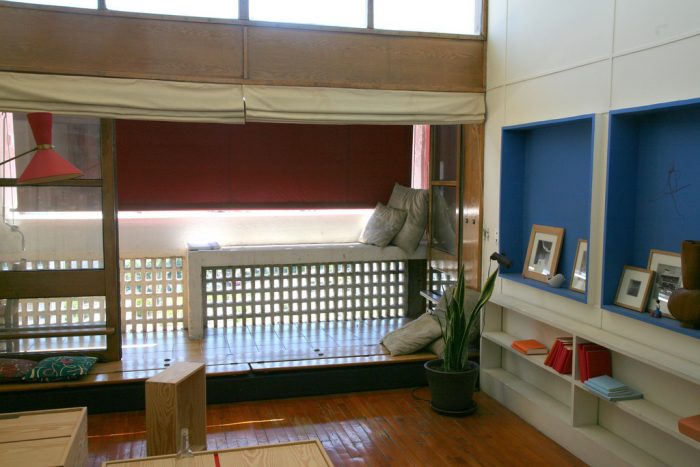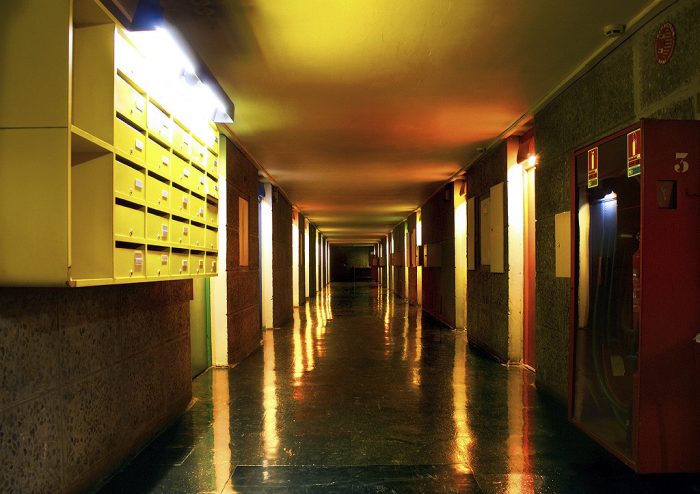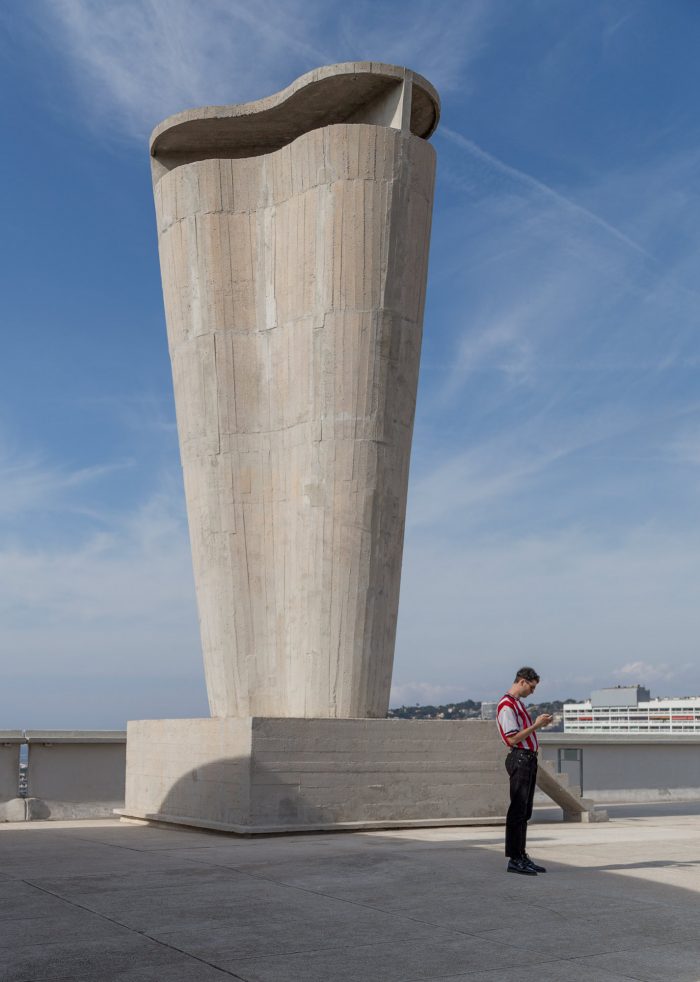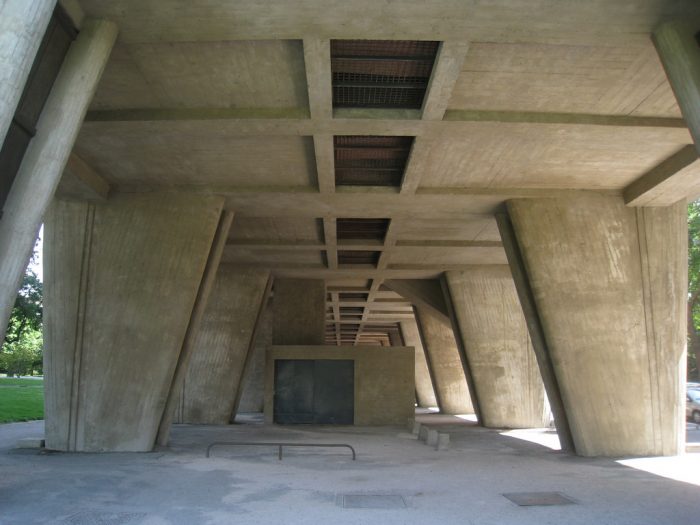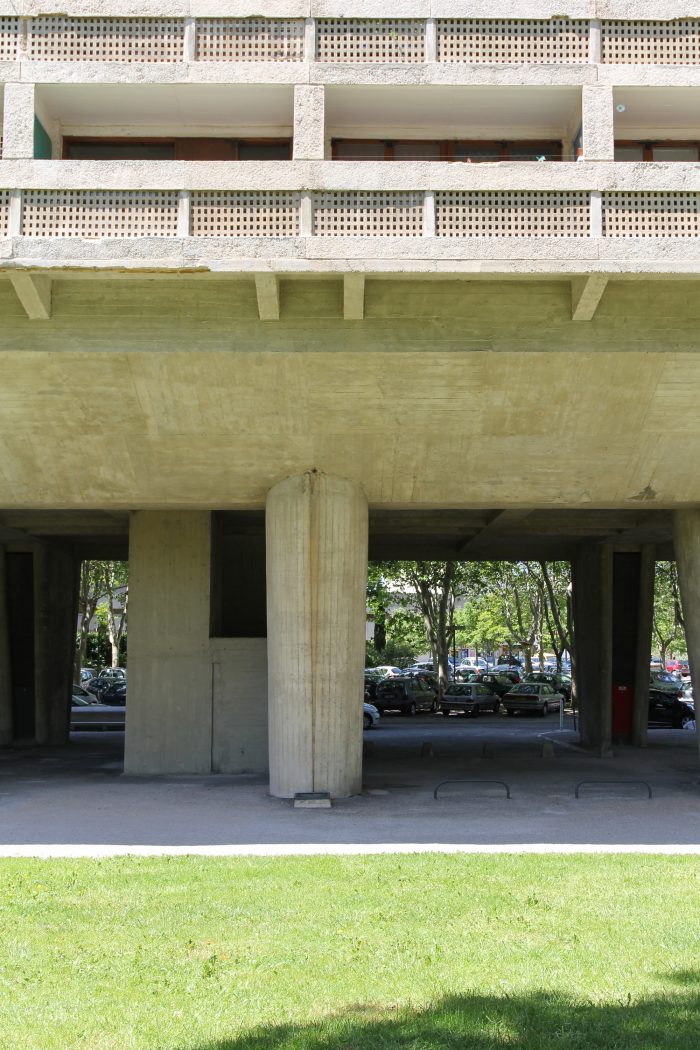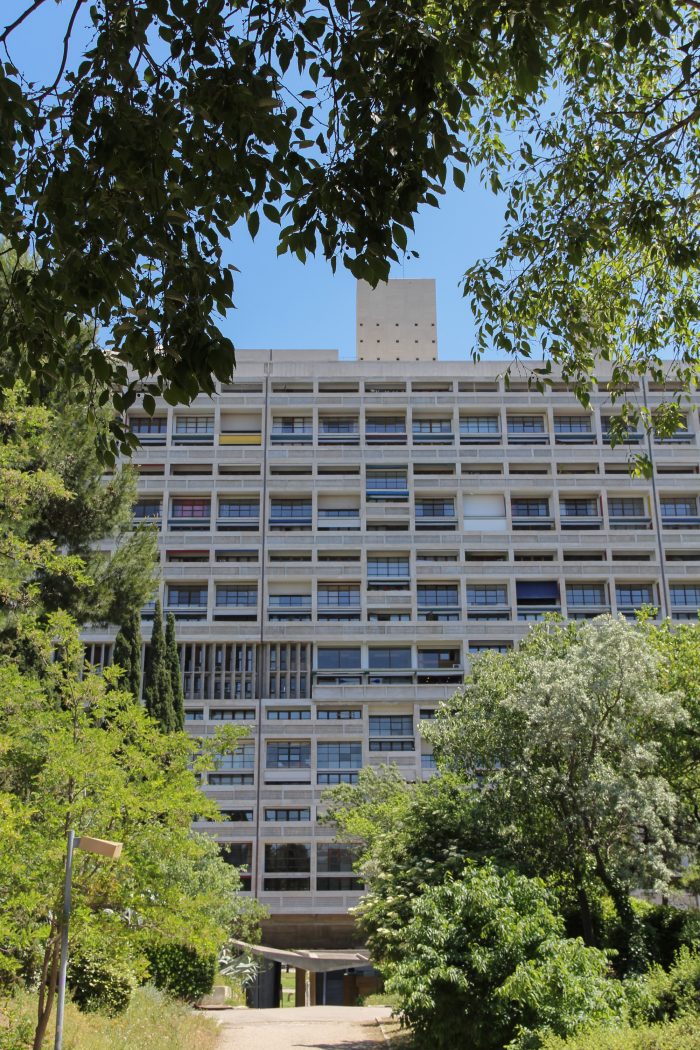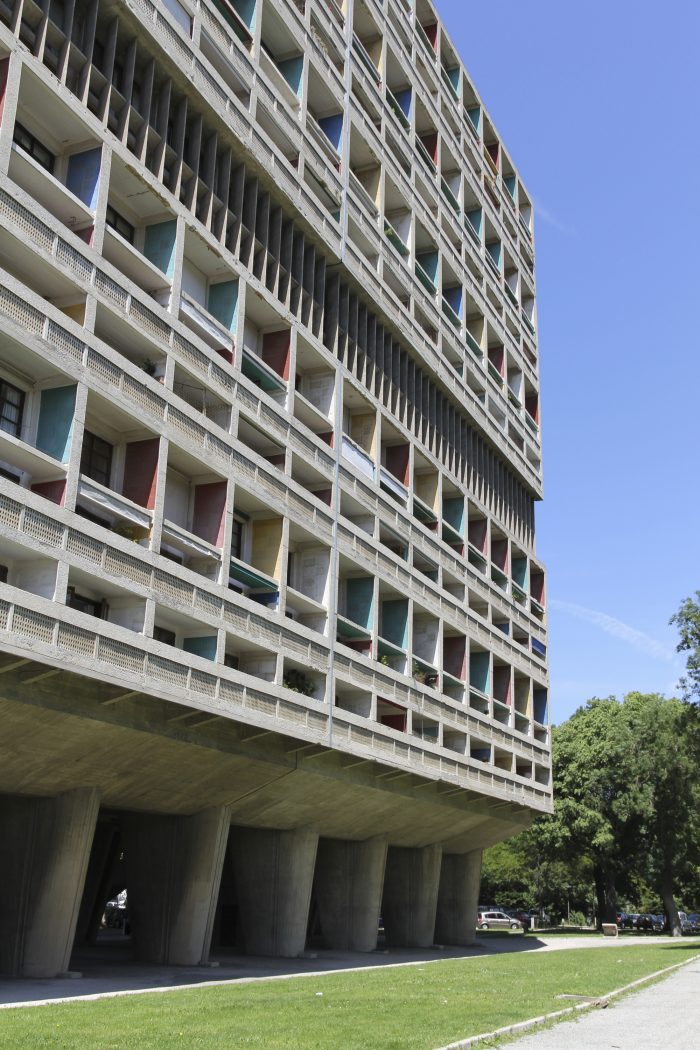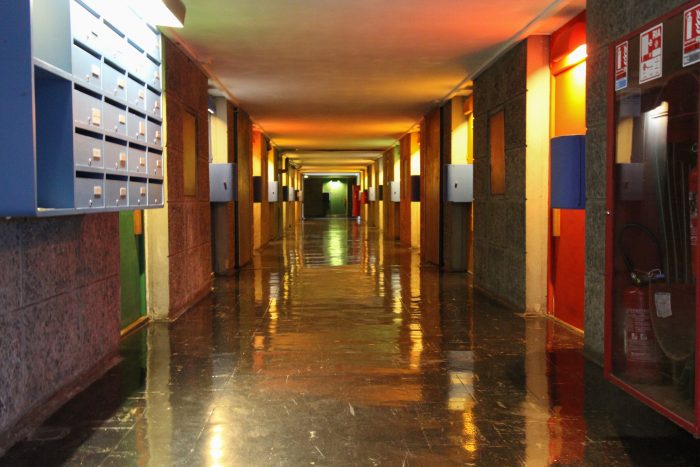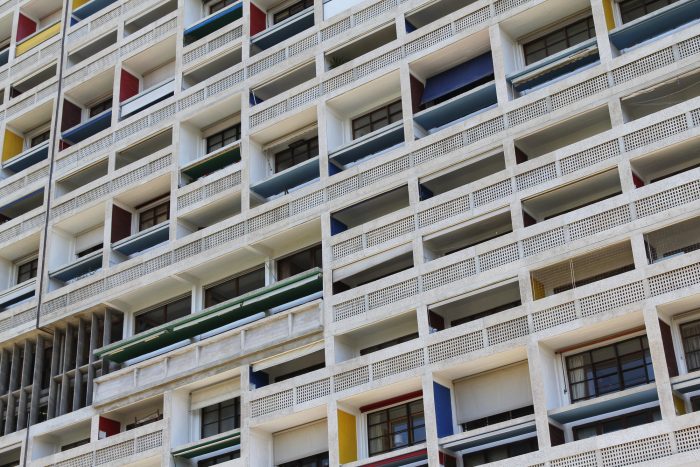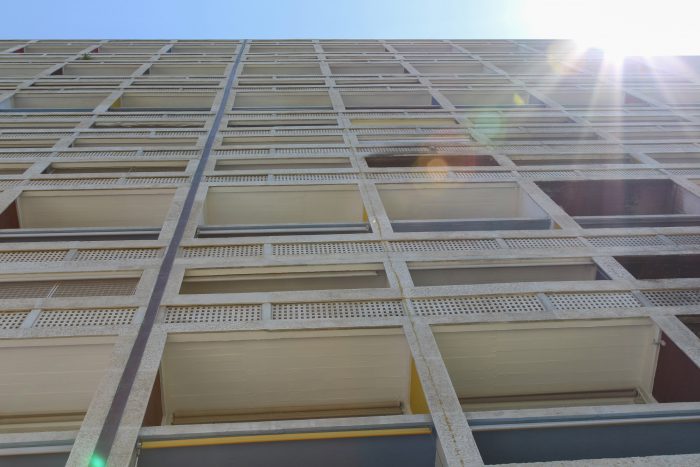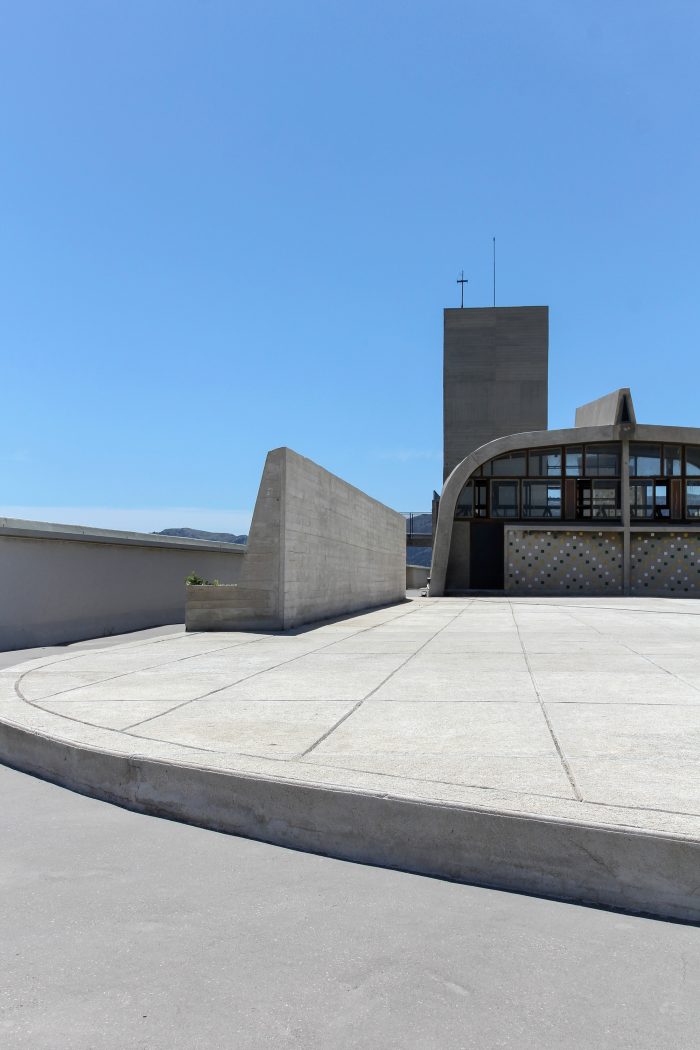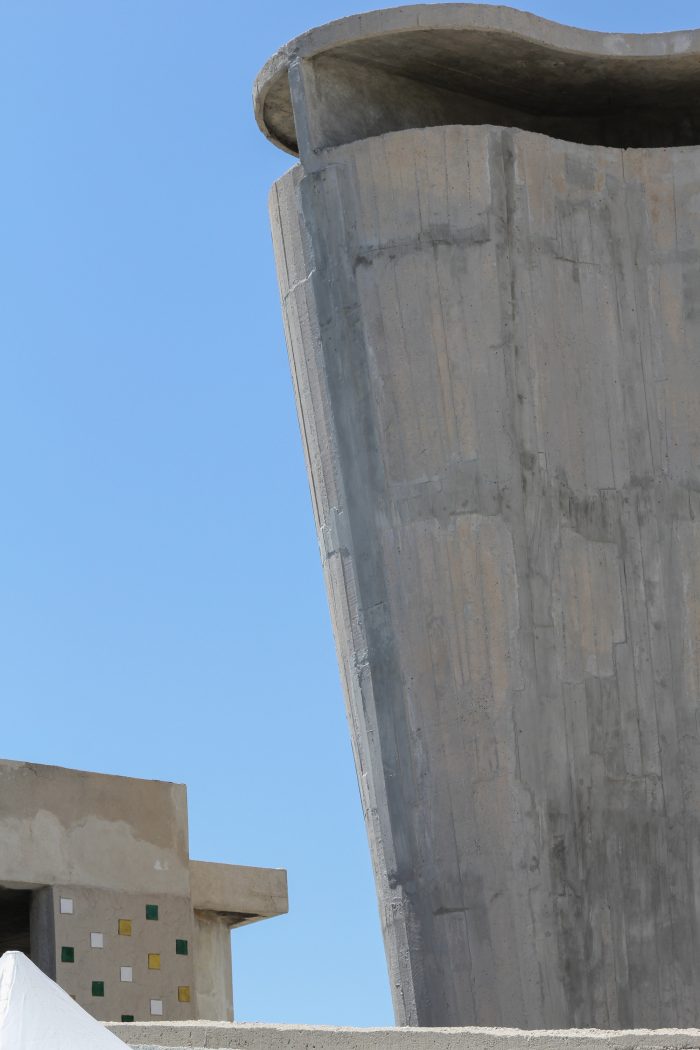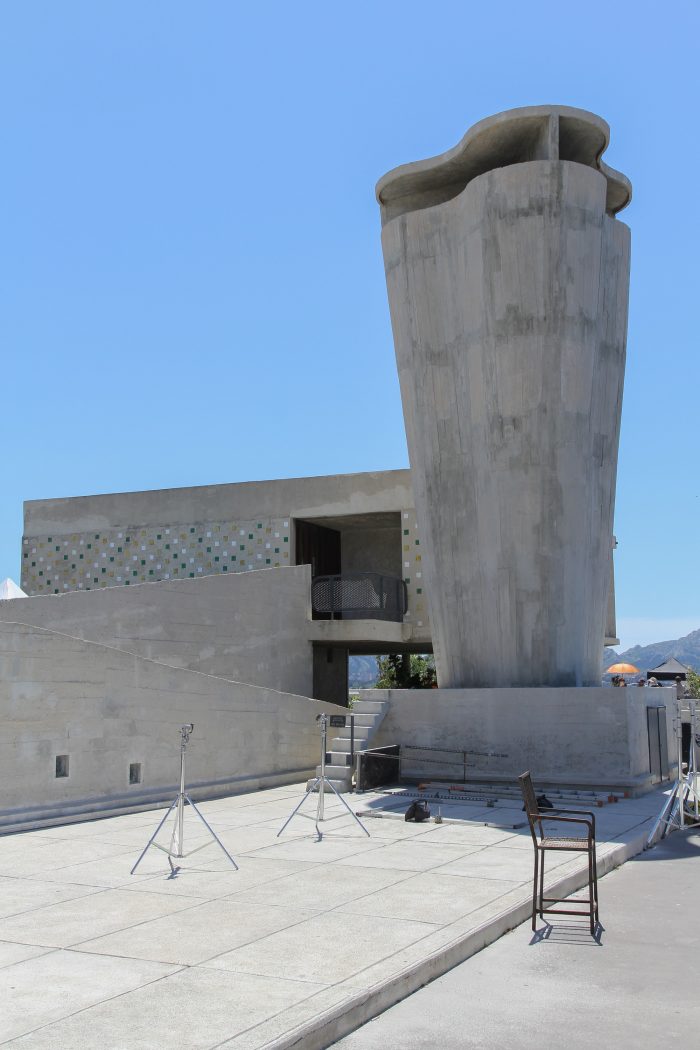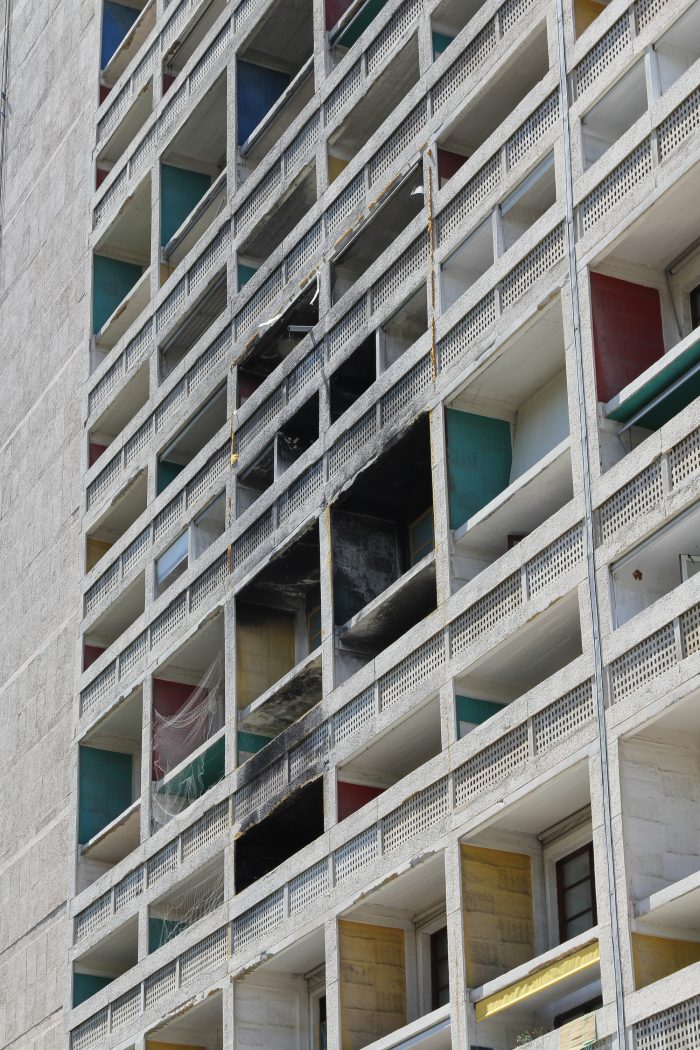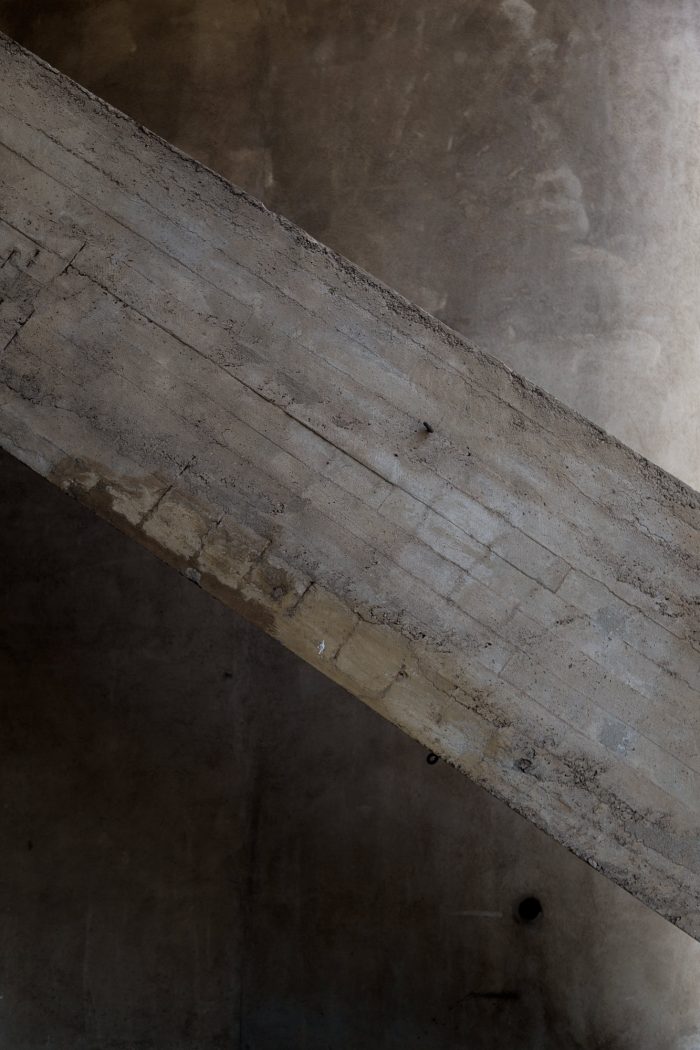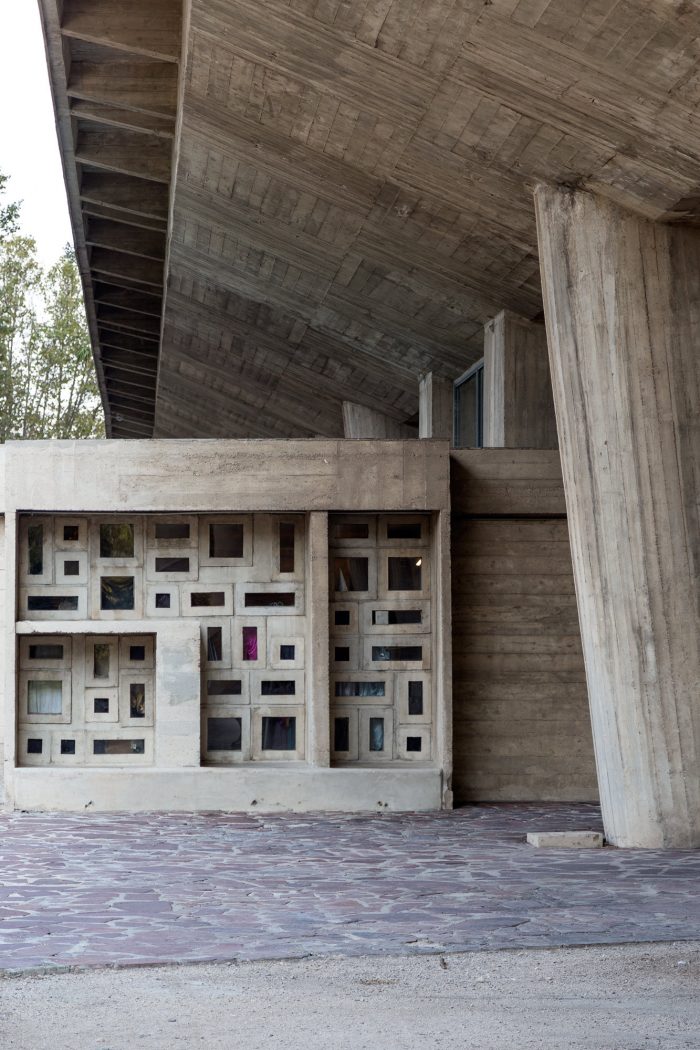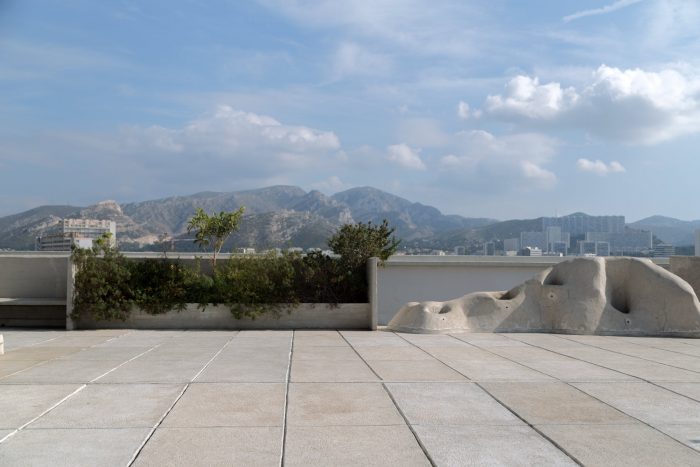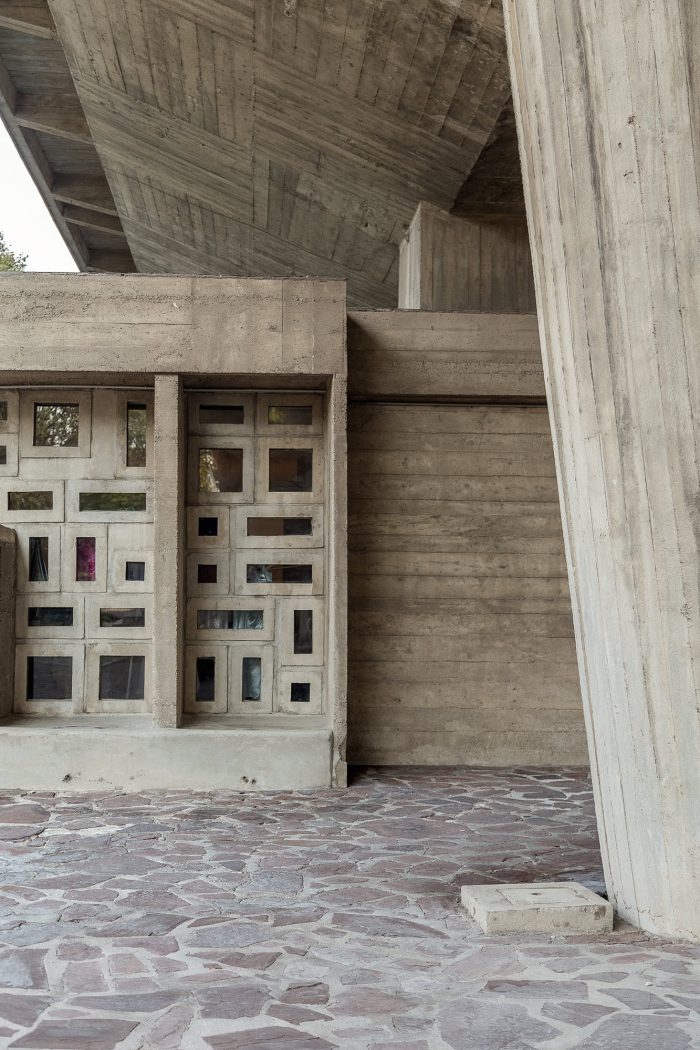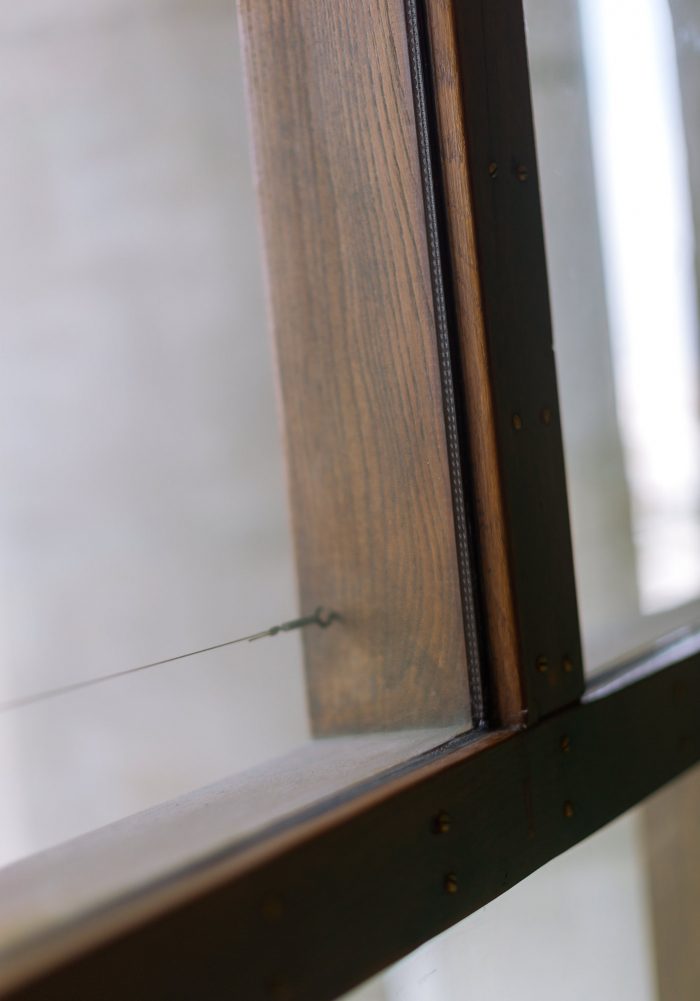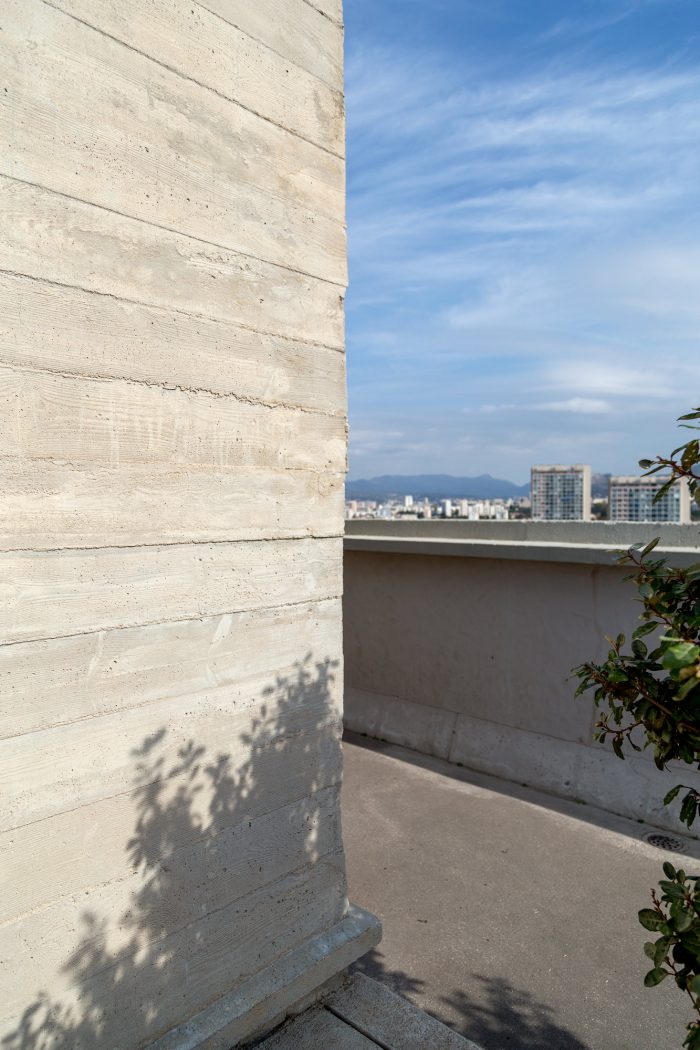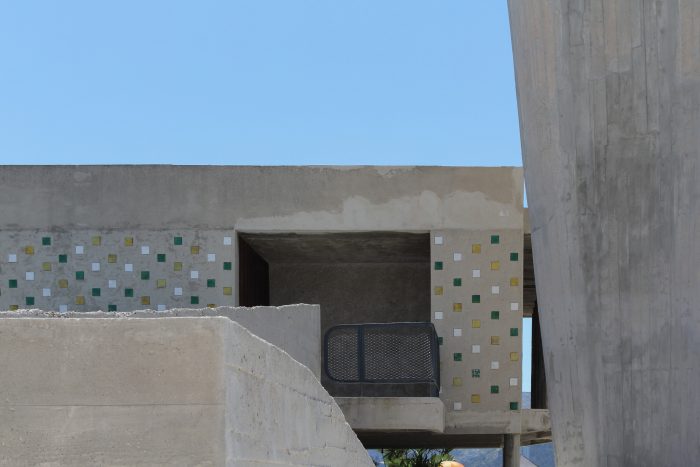二战后,人们对住房的需求达到了前所未有的高度。位于法国马赛的Unite d’Habitation是著名建筑师Le Corbusier的第一个大型项目。1947年,欧洲还在感受第二次世界大战的影响,勒-柯布西耶受命为法国遭受轰炸后流离失所的马赛人民设计一个多户住宅项目。
After World War II, the need for housing was at an unprecedented high. The Unite d’Habitation in Marseille, France was the first large scale project for the famed architect, Le Corbusier. In 1947, Europe was still feeling the effects of the Second World War, when Le Corbusier was commissioned to design a multi-family residential housing project for the people of Marseille that were dislocated after the bombings on France.
1952年竣工的Unite d’Habitation是勒-柯布西耶新住房项目系列的第一个项目,它注重所有居民的公共生活,让他们在一个 “垂直花园城市 “中购物、娱乐、生活和聚在一起。
Completed in 1952, the Unite d’ Habitation was the first of a new housing project series for Le Corbusier that focused on communal living for all the inhabitants to shop, play, live, and come together in a “vertical garden city.”
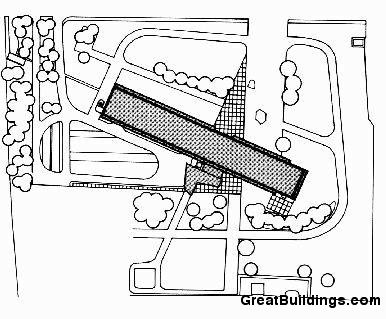
Unite d’Habitation无论是对于勒-柯布西耶来说,还是对于如何处理这样一个容纳大约1600名居民的大型建筑群来说,都是第一次。尤其是勒-柯布西耶与别墅相比,如此大规模的建筑并不多。当为如此大量的居民设计时,自然的本能是在景观上横向铺开设计,而勒-柯布西耶设计的社区,是人们在一个混合用途的现代主义住宅高层中会遇到的社区。
The Unite d’Habitation was a first, both for Le Corbusier and the ways in which to approach such a large complex to accommodate roughly 1,600 residents. Especially since Le Corbusier did not have many buildings of such a substantial scale when compared to the villas. When designing for such a significant number of inhabitants natural instinct is to design horizontally spreading out over the landscape, rather Le Corbusier designed the community that one would encounter in a neighborhood within a mixed use, modernist, residential high rise.
勒-柯布西耶的 “垂直花园城市 “理念是基于将别墅纳入一个更大的体量内,让居民拥有自己的私人空间,但在私人领域之外,他们会在一起购物、吃饭、锻炼和聚会。
Le Corbusier’s idea of the “vertical garden city” was based on bringing the villa within a larger volume that allowed for the inhabitants to have their own private spaces, but outside of that private sector they would shop, eat, exercise, and gather together.

近1600名居民被分在18层楼,设计需要对空间组织进行创新,以容纳生活空间以及公共、公用空间。有趣的是,大部分的公共空间并不发生在建筑内,而是放在屋顶上。
With nearly 1,600 residents divided among eighteen floors, the design requires an innovative approach toward spatial organization to accommodate the living spaces, as well as the public, communal spaces. Interestingly enough, the majority of the communal aspects do not occur within the building; rather they are placed on the roof.
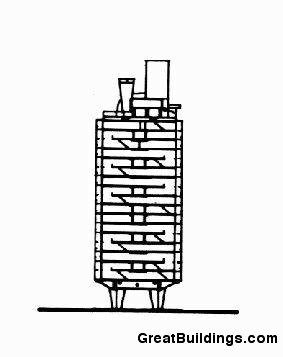
屋顶成为一个花园平台,里面有一条跑道、一个俱乐部、一个幼儿园、一个健身房和一个浅水池。在屋顶旁,有商店、医疗设施,甚至还有一家小型酒店分布在建筑内部。Unite d’Habitation本质上是一个 “城中之城”,在空间上,以及功能上都为居民进行了优化。
The roof becomes a garden terrace that has a running track, a club, a kindergarten, a gym, and a shallow pool. Beside the roof, there are shops, medical facilities, and even a small hotel distributed throughout the interior of the building. The Unite d’Habitation is essentially a “city within a city” that is spatially, as well as, functionally optimized for the residents.
与柯布西耶惯常使用的鲜明的白色外墙不同,Unite d’Habitation是由战后欧洲成本最低的钢筋混凝土(粗铸混凝土)建造的。然而,它也可以被解释为物质主义的实施,旨在描述战后有条件的生活状态–粗糙、破旧、无情。
Unlike Corbusier’s usual employment of a stark, white façade, Unite d’Habitation is constructed from reinforced beton-brut concrete (rough cast concrete), which was the least costly in post-war Europe. However, it could also be interpreted as materialistic implementation aimed at characterizing the conditional state of life after the war – rough, worn, unforgiving.
即使Unite d’Habitation没有像柯布西耶的大多数作品那样具有物质主义的特质,但除了柯布西耶在20世纪20年代发展的五点之外,仍然有一种机械主义的影响。例如,建筑的大体量被支撑在巨大的导引柱上,使建筑下方有流通、花园和聚会空间;屋顶花园/露台创造了整个建筑内最大的公共空间,而将天井纳入外立面系统中,使建筑高度的感觉降到最低,以创造一个抽象的带状窗,强调如此大的建筑的水平性。
Even though Unite d’Habitation does not take on the same materialistic qualities as most of Corbusier’s works, there is still a sense of mechanistic influence, in addition to the Five Points developed by Corbusier in the 1920s. For example, the buildings large volume is supported on massive pilotis that allow for circulation, gardens, and gathering spaces below the building; the roof garden/terrace creates the largest communal space within the entire building, and the incorporated patio into the façade system minimizes the perception of the buildings height, as to create an abstract ribbon window that emphasizes the horizontality of such a large building.
另外,在设计中,显然勒-柯布西耶来自其他行业的机械化影响并没有消失。尽管Unite d’Habitation非常庞大,但它开始像柯布西耶非常感兴趣的蒸汽船。
Also, it is apparent that Le Corbusier’s mechanized influences from other industries have not been lost in design. As massive as the Unite d’Habitation is, it begins to resemble the steamship that Corbusier is so intrigued with.
巨大的体量似乎是浮动的,带状的窗户类似于沿船体运行的船舱窗户,而屋顶花园/露台和雕塑般的通风栈道则出现在顶层甲板和烟囱上。尽管这些元素相当形象,可以根据感觉进行解释,但两者之间有内在的联系。
The massive volume appears to be floating, the ribbon windows resemble the cabin windows running along the hull, while the roof garden/terrace and sculptural ventilation stacks appear as the top deck and the smoke stacks. Even though that these elements are quite figural and open to interpretation based on perception, there is an inherent connection between the two.
Unite d’Habitation最有趣也是最重要的一个方面是住宅单元的空间组织。不同于大多数住宅项目的 “双层 “走廊(一条走廊,两边都是单元),勒-柯布西耶将单元设计成从建筑的两边跨越,同时拥有一个双层高度的生活空间,将所需的走廊数量减少到每三层一个。
One of the most interesting and important aspects of the Unite d’Habitation is the spatial organization of the residential units. Unlike most housing projects that have a “double-stacked” corridor (a single hallway with units on either side), Le Corbusier designed the units to span from each side of the building, as well as having a double height living space reducing the number of required corridors to one every three floors.
通过缩小单元和允许双高空间,柯布西耶能够有效地在建筑中放置更多的单元,并创造一个住宅体量的连锁系统。在单位的两端各有一个阳台,由一个帽檐保护,使整个单位的交叉通风通过狭窄的卧室流入双层高度的空间;强调开放的体量,而不是一个开放的计划。
By narrowing the units and allowing for a double height space, Corbusier is capable of efficiently placing more units in the building and creating an interlocking system of residential volumes. At each end of the unit there is a balcony protected by a brise-soleil that allows for cross ventilation throughout the unit flowing through the narrow bedrooms into the double height space; emphasizing an open volume rather than an open plan.
Unite d’Habitation是Le Corbusier最重要的项目之一,也是对住宅建筑最创新的建筑反应之一。以至于Unite d’Habitation据说因使用贝当-布鲁特混凝土而影响了布鲁特主义风格。自此,Unite d’Habitation成为全球公共住宅的典范;然而,没有任何一个项目能像Unite d’Habitation那样成功,只因为Corbusier在项目中建立的模块化比例。尽管如此,Le Corbusier的第一个大型项目已被证明是他最重要和最鼓舞人心的作品之一。
Unite d’Habitation is one of Le Corbusier’s most important projects, as well as one of the most innovative architectural responses to a residential building. So much so, that the Unite d’ Habitation is said to have influenced the Brutalist Style with the use of beton-brut concrete. Unite d’Habitation has since been the example for public housing across the world; however, no venture has been as successful as the Unite d’Habitation simply because the Modular proportions that Corbusier established during the project. Nonetheless, Le Corbusier’s first large scale project has proved to be one of his most significant and inspiring.
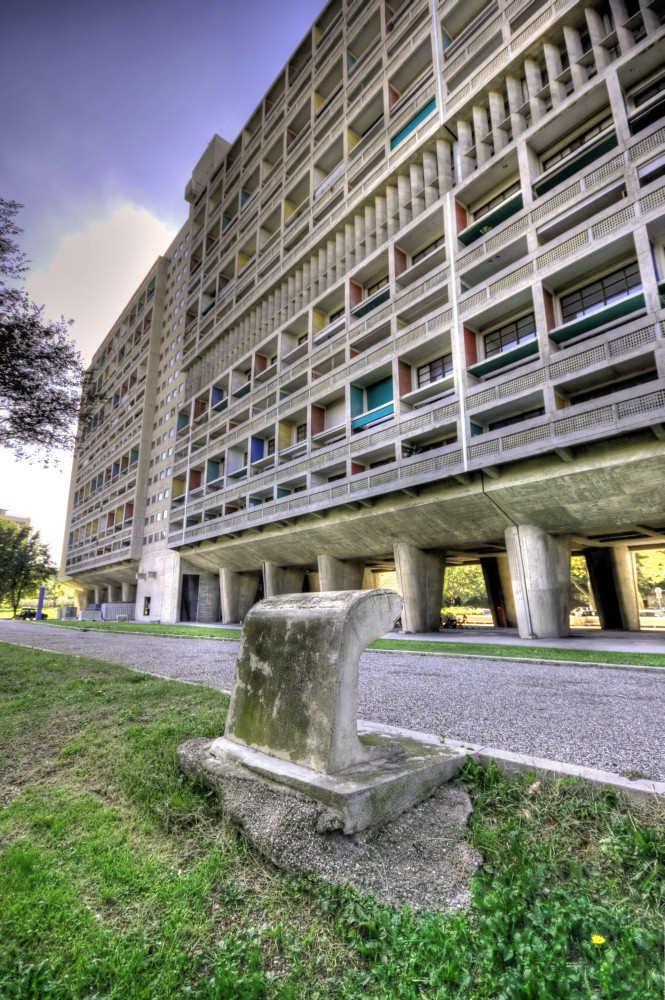
建筑师:Le Corbusier
年份:1952年
摄影:Steve de Vriendt, Rik Moran, Wojtek Gurak Steve de Vriendt, Rik Moran, Wojtek Gurak, Flickr用户: Vincent Desjardins, Flickr用户: Guzman Lozano, Flickr用户: dom dada, Flickr用户: saragoldsmith
城市: MARSEILLE
国家:法国
Architects: Le Corbusier
Year: 1952
Photographs: Steve de Vriendt, Rik Moran, Wojtek Gurak, Flickr User: Vincent Desjardins, Flickr user : Guzman Lozano, Flickr User: dom dada, Flickr User: saragoldsmith
City: MARSEILLE
Country: France


